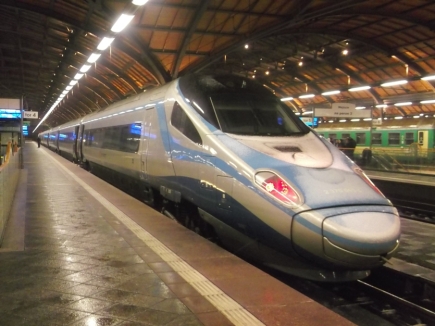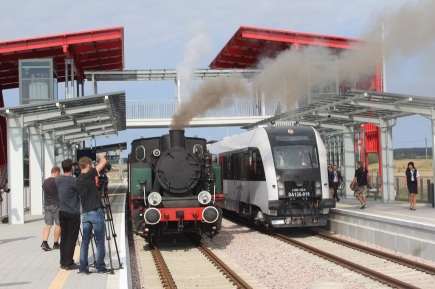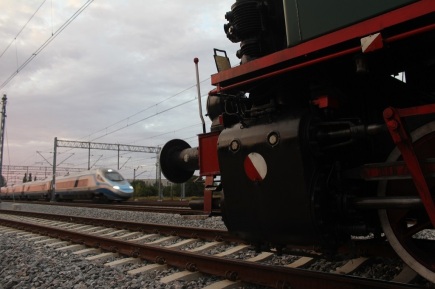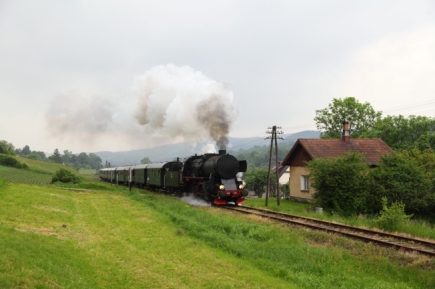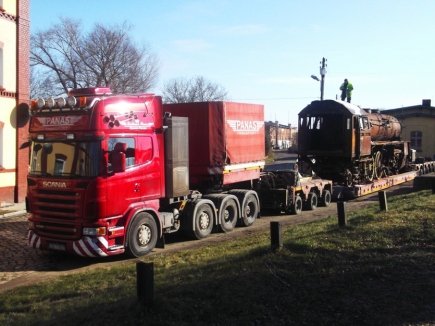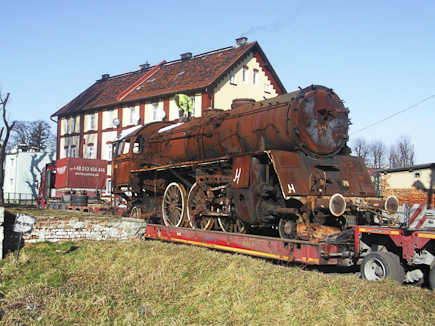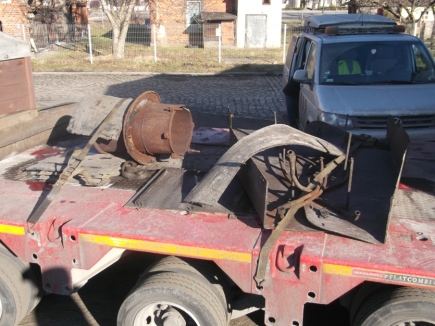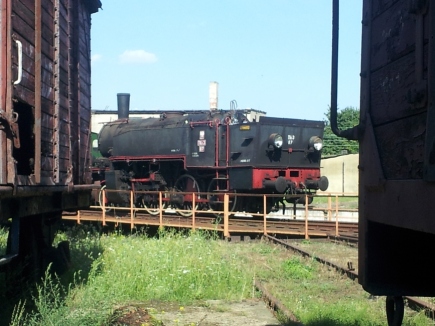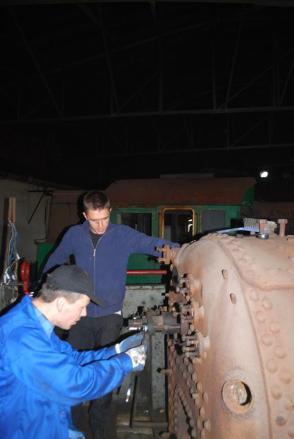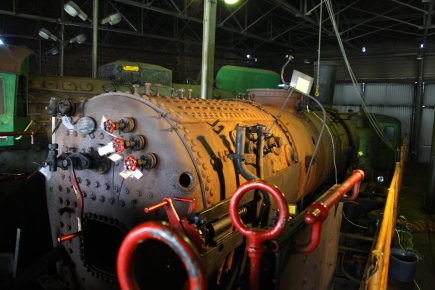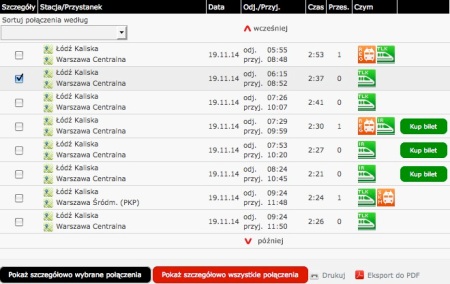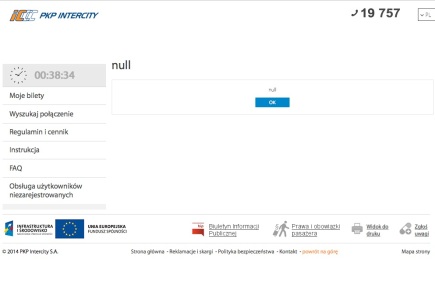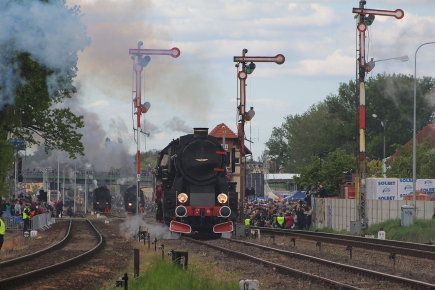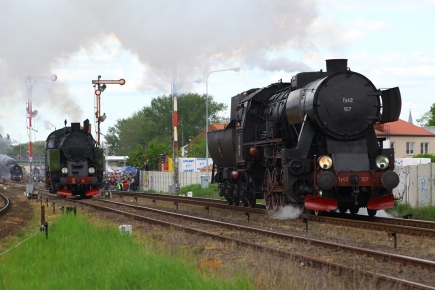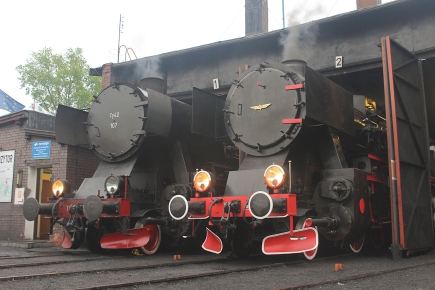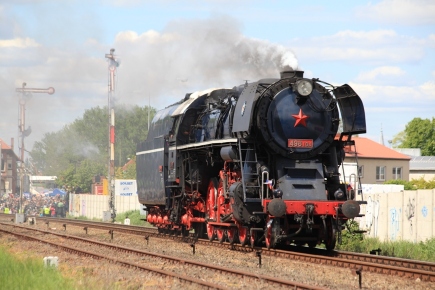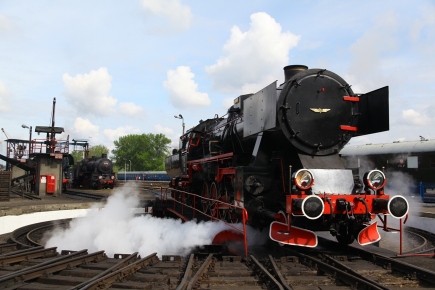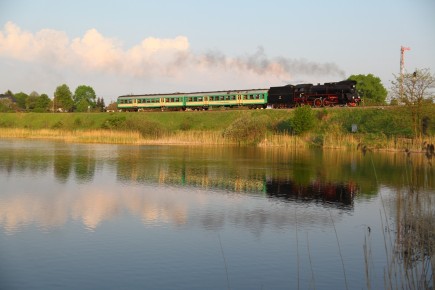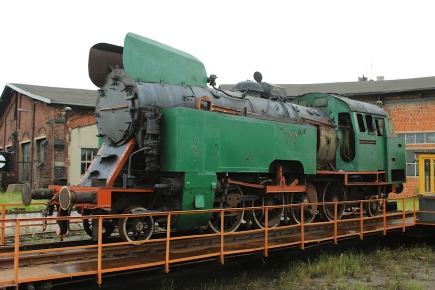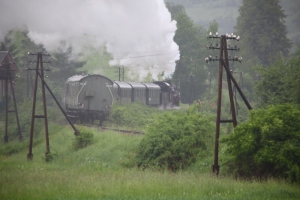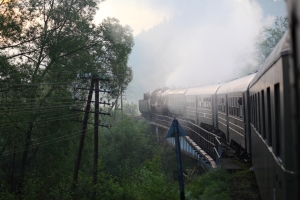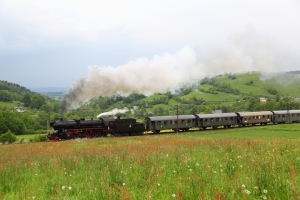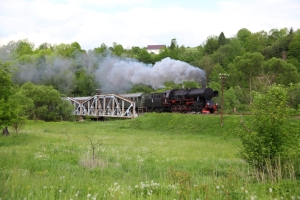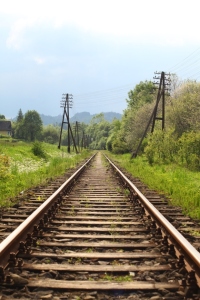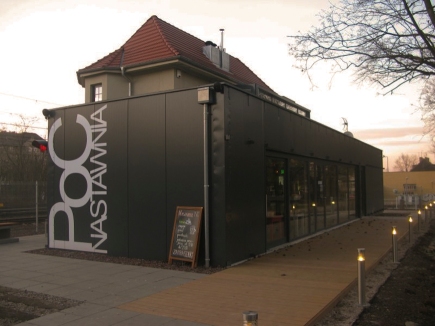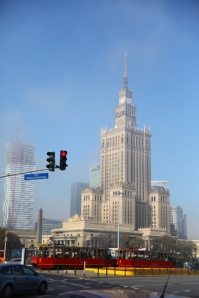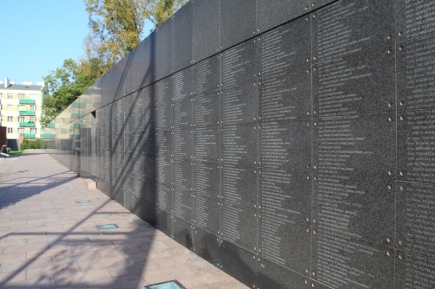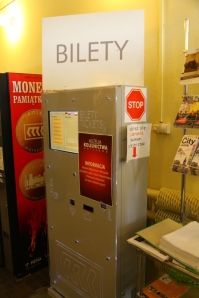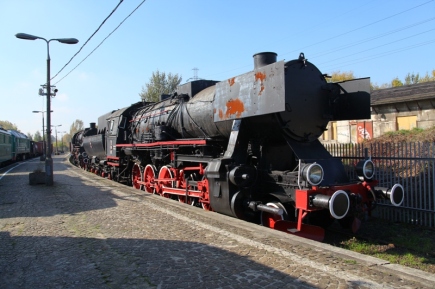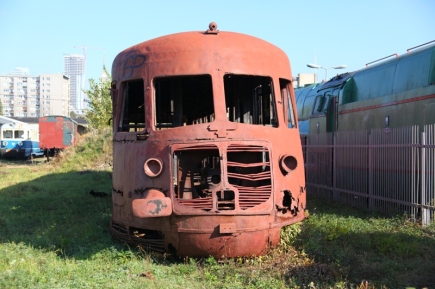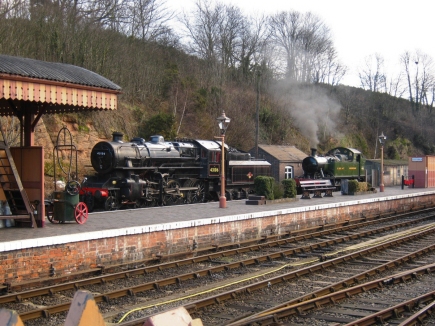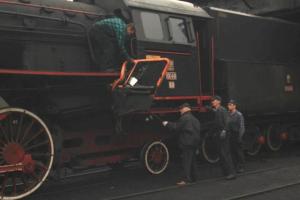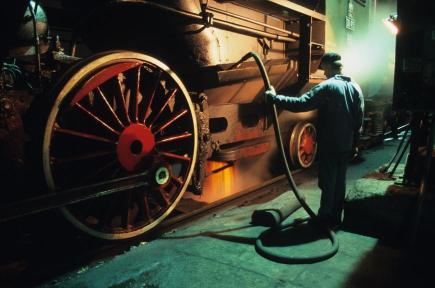
Ol49-59 undergoing servicing at Wolsztyn. Photo John Savery.
News has reached us that the steam operation at Wolsztyn is set to suffer further cutbacks. The Wielkopolska government is making drastic budget cuts in 2013, believed to be in the region of 25%. One of the casualties will be the daily steam services from Wolsztyn, which are due to end with the December timetable change.
Ten years ago, Wolsztyn would send out three engines a day. For the past few years, this has been reduced to one engine a day. The latest cutbacks will see the 7-days-a-week service reduced to just 5 days per week, with the withdrawal of weekend services.
One would expect the impact on the town to be fairly major. Wolsztyn’s weekend steam tourists come not only from Poland but also from all over Europe and beyond. It is estimated that Wolsztyn Experience clients alone put as much as 500,000 zloty into the local economy each year, with an additional 500,000 zloty coming from other tourists who also visit the region. If the weekend steam services cease it is certain that the number of rail enthusiast tourists visiting Wolsztyn will fall dramatically, and with it, the amount of money that they inject into the local economy.
This threat to the local economy and local tourism flies in the face of the efforts currently being made by the Polish National Tourist Office, who, this very week, are trying to entice visitors, who may have visited during the Euro 2012 championships, back to Poland.
Behind the Water Tower readers are not known to give up without a fight.
Questions need to be asked about the cost/benefit gained by moving to a 5 day-a-week service as opposed to maintaining the 7 day-a-week operation.
Steam locomotives are serviced on a time interval based servicing regime, rather than on a days in steam servicing regime. Boilers become due for overhaul after a fixed time, regardless of whether they are in steam or not. Operating costs are therefore not proportional to usage. Savings on overhauls by a reduction in usage will be limited.
What will PKP Cargo do with the locomotives at weekends? If they are laid up cold, this cycling of the boiler each week is likely to only add to repair bills for the locomotives due to the constant thermal cycling of the boilers causing additional wear. If the locomotives are left in steam over the weekend, then this will still require staff at the depot, limiting the cost savings that are made by not running the locomotives.
Diesel railcars have been prone to failure during cold and snowy weather. Do Koleje Wielkopolskie intend to make improvements to the flimsy design of these railcars to make them more weather proof?
Readers who feel they would like to make their views known to the relevant authorities may care to use the following addresses. A well written hard copy letter carries more weight than an email, however, given the tight timescales involved, it will not hurt to send an email copy as well, with a note that a ‘hard copy’ is in the post.
The Chief Executive of Wielkopolska province
Marek Woźniak
Marszałek Województwa Wielkopolskiego
al. Niepodległości 18, pokój 142, budynek C
61-713 Poznań
POLAND
tel.: 61 626 66 00
fax: 61 626 66 01
e-mail: marszalek@umww.pl
The Deputy Chief Executive of Wielkopolska Province
Wojciech Jankowiak
Wicemarszałek Województwa Wielkopolskiego
al. Niepodległości 18, pokój 340, budynek C
61-713 Poznań
POLAND
tel.: 61 626 66 10
fax: 61 626 66 11
e-mail: wojciech.jankowiak@umww.pl
The Wielkopolska Tourist Organisation
Ewa Przydrożny
Dyrektor
Wielkopolska Organizacja Turystyczna
ul. 27 Grudnia 17/19, I p
61-737 Poznań
POLAND
ewa.przydrozny@wot.org.pl
The Polish National Tourist Office
Mr Boguslaw Becla
Acting Director
Polish National Tourist Office
Level 3, Westgate House
West Gate
London W5 1YY
bogdan.becla@poland.travel
Mr Roman Gozdzikowski
General Manager
Polish National Tourist Office
Level 3, Westgate House
West Gate
London W5 1YY
roman.gozdzikowski@poland.travel
The Mayor of Wolsztyn
mgr Andrzej Rogozinski
Burmistrz Wolsztyna
Urząd Miejsji
Rynek 1
64-200 Wolsztyn
POLAND
burmistrz@wolsztyn.pl
The Polish Ambassador
Witold Sobków
H.E. The Ambassador of the Republic of Poland
The Embassy of the Republic of Poland
47 Portland Place
London W1B 1JH
london@msz.gov.pl
